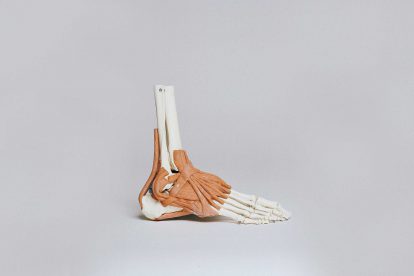
Foreign health brands entering the Chinese market have a lot to be excited about. Gaps in state healthcare, with doctors overworked and appointments scarce, means that the government encourages private investment. Moreover, the habit of travelling abroad for superior healthcare means that Chinese consumers are already primed to favour foreign healthcare brands over domestic.
But when trying to communicate with this market, brands must address the fundamental differences between Chinese attitudes to health and the Western allopathic tradition. In Traditional Chinese Medicine (TCM), health isn’t the absence of illness—it’s a body and mind whose elements are all perfectly balanced.
A Chinese saying illustrates the difference between the Western and Chinese concepts of health like this: “Chinese medicine treats humans, Western medicine treats diseases.”
Not only is TCM is championed powerfully by President Xi Jinping, used to treat everything from hearing problems to late-stage cancer pain, but TCM-influenced concepts—like respecting natural rhythms, constantly adjusting internal balance, functional nutrition, and addressing the whole body when treating illness—are very much present in Chinese lives. Additionally, the deeper, semi-conscious associations brought about by TCM in culture are still firmly ingrained.
To give one example: the liver has been believed for thousands of years to manifest problems through the eyes—so communication around liver disease will gain more resonance if it focusses on clear, bright eyes without eye bags or wrinkles.
This relationship might be called semiotic. Healthy eyes are the sign of a healthy liver: so that signifiers cuing eye health are really talking about liver health as well. Similarly, many esoteric remedies include parts of animals which represent some aspect of good health—a turtle is a sign of longevity, hence turtle shell powder is an ingestible signifier of long life.
TCM is a medical system built not on periodical tables, equations and deductions, but on connections, holistic world-views, and networks of semiotic signs in which Chinese consumers—yes, even TCM disbelievers—still live. Ignoring these is to expect consumers to jettison thousands of years of cultural cues and complex networks of meaning.
We at Space Doctors know that branding doesn’t work like that.
Two cultures: why scientific neutrality won’t work in China
Because TCM concepts (from acupuncture to face mapping) have been eagerly seized on by the Western wellness world, it’s easy for pharmaceutical and clinical brands to assume that TCM is predominantly about wellness. It’s convenient to think that any Chinese consumer affluent enough for private healthcare is also “sophisticated” enough to have converted completely to Western allopathic medicine.
However, this binary division between communications for holistic wellness, and for clinical health, is not necessary—it’s just so rooted in Western cultures, that Western brands have difficulty seeing past it.
In 1959, British scientist and writer CP Snow gave a seminal lecture named The Two Cultures. As a novelist and a physical chemist, he was frustrated by the near-complete lack of mutual understanding between the sciences and the humanities/arts.
This lack of understanding has since become a principle in the West. Equations and data seem like the enemy of cultural creativity, while many pharma brands assume that a hint of artistic or cultural affiliation detracts from the message of serious health—pharma brand communication must involve white coats, stern looks, calm authority and neutrally-voiced, direct messaging.
But Chinese consumers are used to objective-sounding scientific bodies and authoritative institutions being exposed as lying or unreliable—health companies’ blanket guarantees are rarely taken on face value. Recently, the Chinese government doled out mass penalties to researchers and drug manufacturers, after it was discovered that 80% of clinical trial data submitted to support new drug applications were fraudulent.
Due to scandals like this, reputation is king in China. Word-of-mouth is the holy grail, but is obviously a big challenge for new market entrants. Another reputational tactic is make all claims specific and verifiable—Chinese consumers expect to do lots of research and data review before taking the plunge on any new product.
Most of all, though, new health brands need their own compelling, distinctive brand narratives. A preference for coherent cultural legacies is one reason for the much-discussed Chinese love of designer goods: an established house with a centuries-old reputation, and a well-publicised history of fervent admirers, is displaying a sound reputation.
In Western countries, medicine which displays social or cultural affiliation in this way, or attempts to form relationships on those terms—medicine which is notably ‘branded’—is assumed to be lighter, closer to the world of wellness than to disease and cure.
But when trying to build a believable presence in China, pharma brands need to develop a strong personality and visible history in order to communicate convincing legitimacy and efficacy.
How brands can successfully showcase holistic personalities
Ahead of building solid word-of-mouth reputation, vivid, interesting and authentic branding is the best way for health brands to develop trust in China.
This means building a brand in a way designed to show strong and relevant personality. Brands can:
- Select influencers not on their reach alone, but on their “fit” with the product as a sincere user;
- Display a richer history and persona than Western pharma companies may be used to giving;
- Recruit local copywriters and illustrators who can bring nuanced, culturally resonant stories to life;
- And most importantly of all, tell resonant, relevant semiotic stories about themselves and the health benefits they offer
Super-targeted, efficiency-only, sterile ideas of health won’t work for consumers who think of health as total physical and mental harmony; who see their symptoms as inherently networked, not treatable in isolation. And super-targeted, efficient, sterile health communications won’t work either.
In order to prosper in China, Western marketers will have to challenge their own assumptions about the science/ culture divide. Successful brands will present a trustable, holistic personality, which can embed itself securely in the semiotic web of meaning, allusion and unconscious response that is Chinese health.